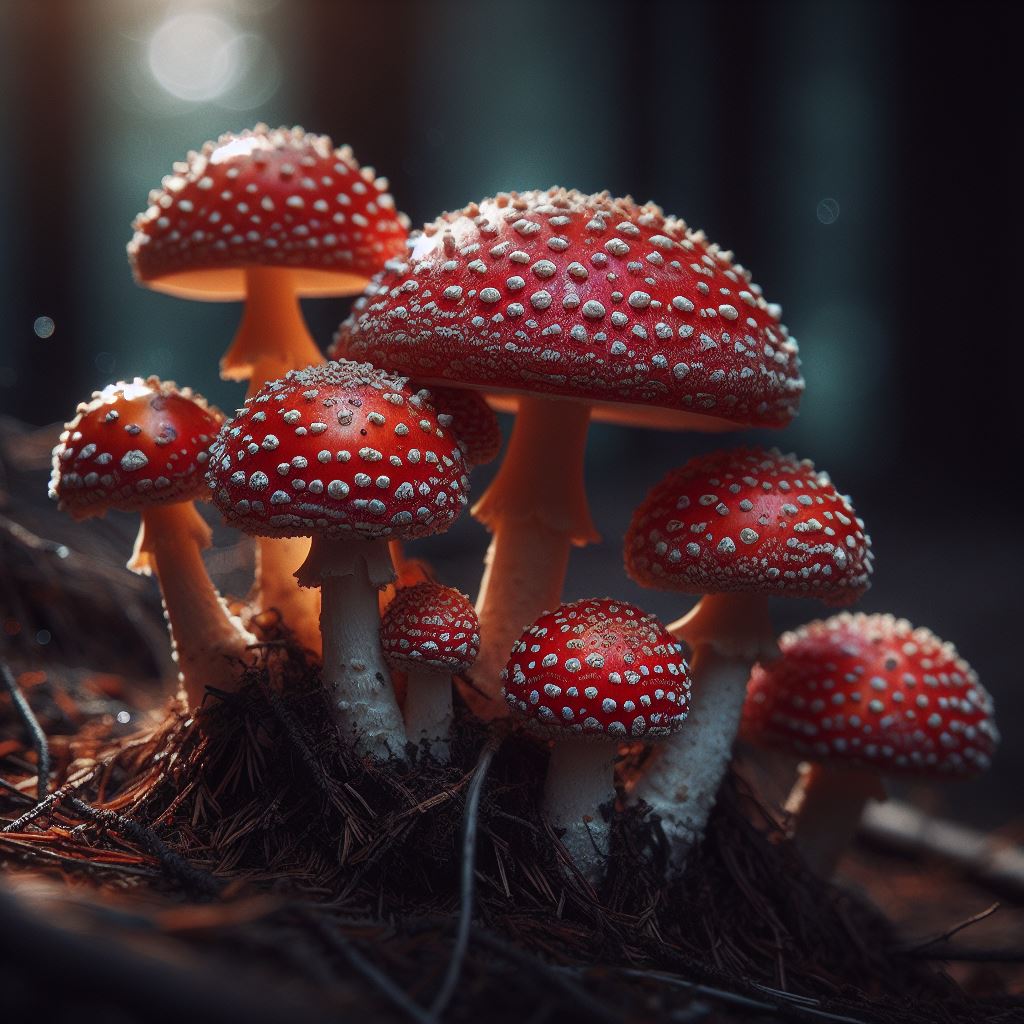Introduction:
The fashion industry is at a crossroads, grappling with its environmental footprint while seeking innovative solutions to drive change. Amidst this pivotal moment, a mushroom revolution is underway, ushering in a new era of eco-friendly materials that promise to transform fashion as we know it. From fungi to pineapple leaves, ingenious alternatives are emerging, challenging the status quo and offering a glimmer of hope for a more sustainable future.
Here are seven of the most significant and innovative materials and creators – and hopes are high in the industry that they may help provide an eco-friendlier way forward for fashion.
- Mylo: Pioneering the Mushroom Leather Revolution Mylo, a groundbreaking material crafted from mycelium, the root-like structure of fungi, is spearheading the mushroom leather revolution. Developed by Bolt Threads, Mylo offers a sustainable alternative to traditional leather, boasting comparable aesthetics and durability without the environmental drawbacks. With leading brands like Stella McCartney and Adidas embracing this innovative material, Mylo is paving the way for a more ethical and planet-friendly approach to fashion.
- Reishi: Redefining Luxury with Fine Mycelium Reishi, born from the visionary minds at MycoWorks, harnesses the power of Fine Mycelium to create premium biomaterials with unparalleled quality and sustainability. With the strength and elegance of traditional leather, Reishi stands as a testament to innovation, marrying artistry with environmental consciousness. Embraced by luxury brands like Hermes, Reishi is shaping the future of fashion with its eco-friendly ethos.
- Vitrolabs: Cultivating Leather Without Compromise Vitrolabs is revolutionizing the leather industry with its groundbreaking approach to cultivation. By harnessing cellular technology, VitroLabs produces cruelty-free leather from a single biopsy, offering a sustainable alternative to conventional leather production. With support from industry titans like Leonardo DiCaprio and Kering, Vitrolabs is poised to redefine luxury with its ethical and eco-conscious ethos.
- Orange Fiber: Transforming Citrus Waste into Sustainable Silk Orange Fiber is turning citrus peel into silky fabrics, showcasing the potential of upcycling in fashion. By extracting cellulose from discarded orange peel, Orange Fiber offers a renewable and biodegradable alternative to traditional textiles. Embraced by leading brands like Salvatore Ferragamo and H&M, Orange Fiber represents a triumph of innovation and sustainability in the fashion industry.
- Kintra: Embracing Biodegradability with Corn and Wheat Kintra is leading the charge towards biodegradable textiles with its innovative use of corn and wheat. By replacing polyester with renewable resources, Kintra offers a sustainable solution to the pervasive problem of synthetic microfibers. Partnering with forward-thinking brands like Pangaia, Kintra is driving a paradigm shift towards eco-friendly fashion that prioritizes both style and sustainability.
- Circulose: Closing the Loop on Textile Waste Circulose is tackling textile waste head-on with its revolutionary recycling process. By transforming discarded clothes into premium fibers, Circulose offers a circular solution to fashion’s waste problem. Embraced by iconic brands like Levi’s and H&M, Circulose embodies the ethos of sustainable fashion, proving that innovation and environmental stewardship can go hand in hand.
- Aircarbon: Harnessing Greenhouse Gas for Good Aircarbon is harnessing the power of greenhouse gas methane to create biodegradable plastics with a positive environmental impact. With a commitment to circularity, Aircarbon offers a sustainable alternative to traditional plastics, paving the way for a greener future. Partnering with industry giants like Nike, Aircarbon is leading the charge towards a more sustainable and regenerative fashion industry.
Conclusion:
As the fashion industry grapples with its environmental impact, these seven innovations offer a beacon of hope for a more sustainable future. From mushroom leather to citrus silk, these eco-friendly materials are redefining the boundaries of fashion, proving that style and sustainability are not mutually exclusive. With continued innovation and collaboration, we can build a fashion industry that respects both people and the planet, ushering in a new era of responsible and regenerative fashion.
Read Also:
- Prioritize Your Eye Health by Using These 8 Essential Daily Practices
- Is Garlic Beneficial For Heart Health?
- Which Home Remedies are Good For Urinary Tract Infections?
- These Food Items are Good for the Patients of Urinary Tract Infections
📍 SEO & Content Strategist | Expert in Current Affairs, History, Geography & Education Blogs | Digital Marketing Specialist
Muhammad Talha Mehmood is a seasoned digital marketing specialist, SEO expert, and content strategist with over six years of experience in creating high-impact, research-driven content. As the driving force behind Globaleak.com, he delivers in-depth articles on current affairs, history, geography, and education, helping readers stay informed with accurate, well-researched insights.
🔹 Expertise & Achievements:
✔ SEO & Content Strategy: Specializes in creating authoritative, high-ranking content that aligns with Google’s EEAT guidelines.
✔ Research & Analysis: Covers historical events, geopolitical trends, and educational topics with in-depth research and expert insights.
✔ Proven Track Record: Has successfully worked with global clients, delivering content that enhances brand trust, audience engagement, and search rankings.
✔ Academic Excellence: Holds an MBA in Marketing from IBA, University of the Punjab, and a B.Com (Hons) from Hailey College of Commerce.
✔ Industry Experience: Started his career with Packages Limited, trained under PITB’s E-Rozgar Program, and later became a Team Leader & Trainer at Emenac Group of Companies.
🚀 Passionate about creating impactful content, Muhammad Talha ensures every article is insightful, engaging, and value-driven.
📧 Email: talhamehmood34@gmail.com
🔗 LinkedIn: linkedin.com/in/talhamehmood-34










